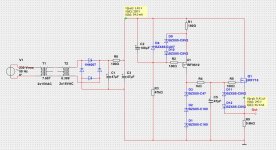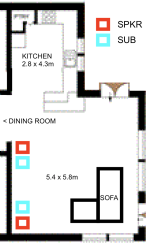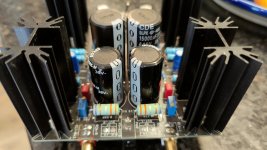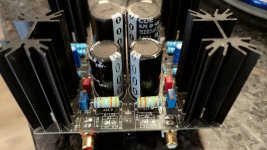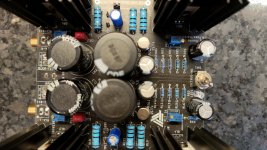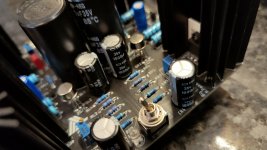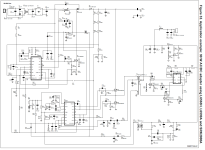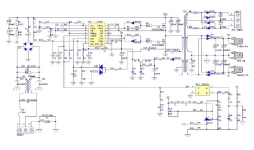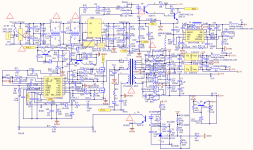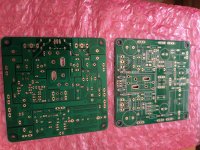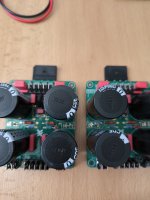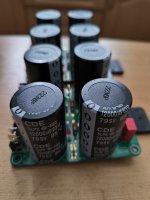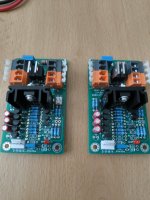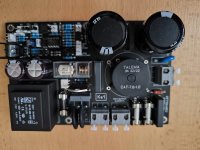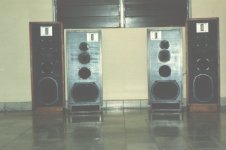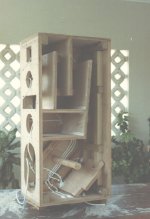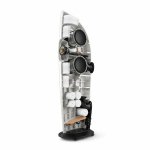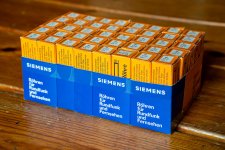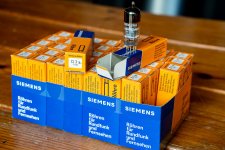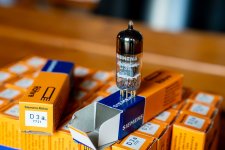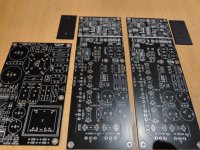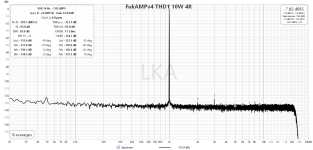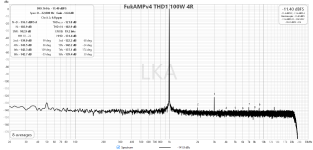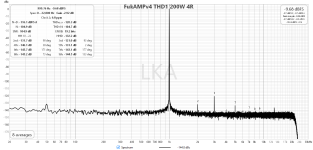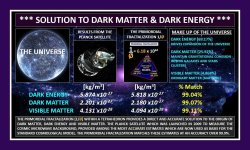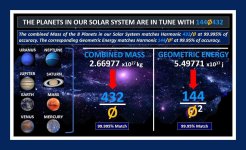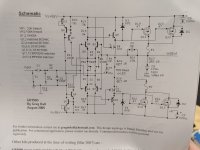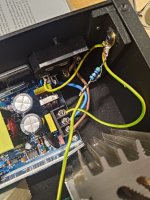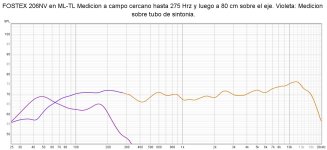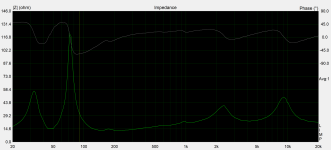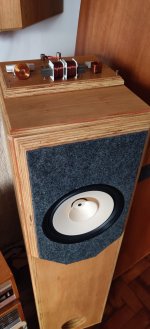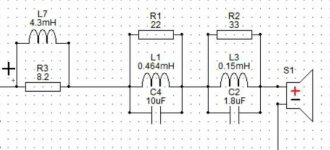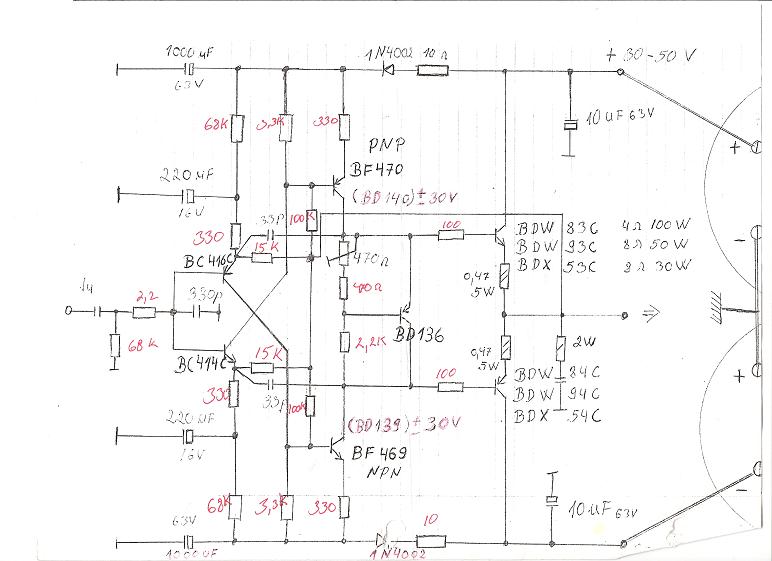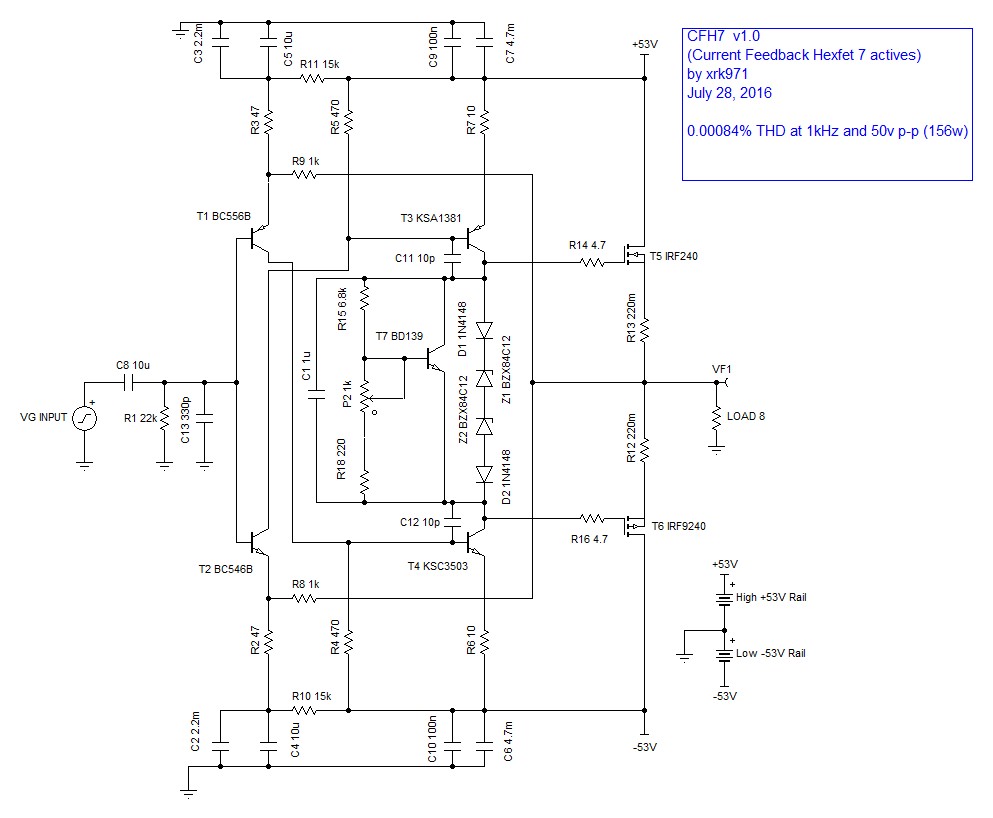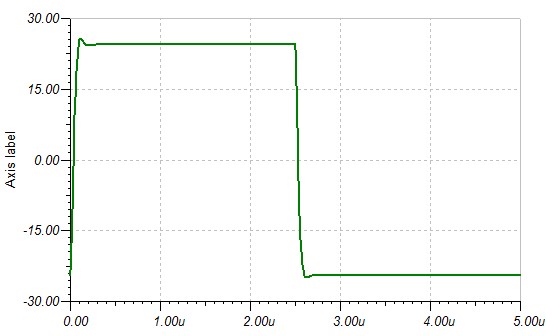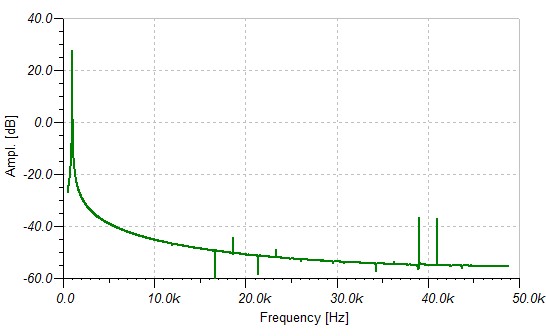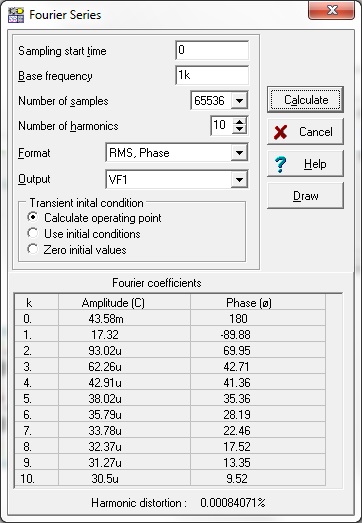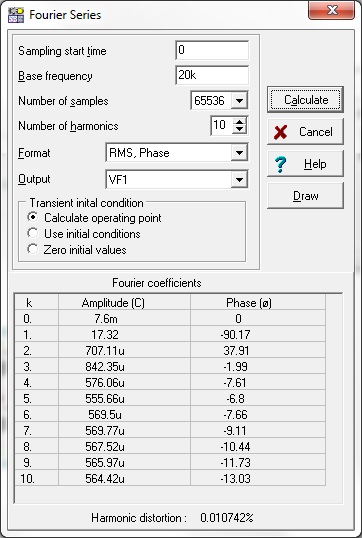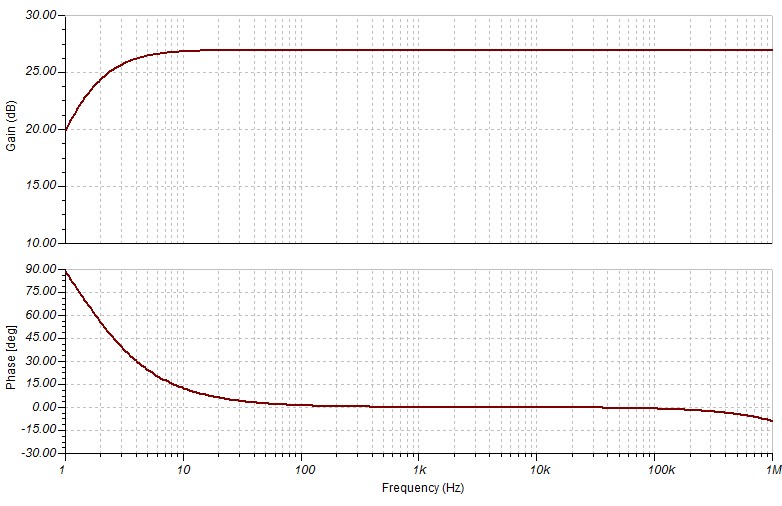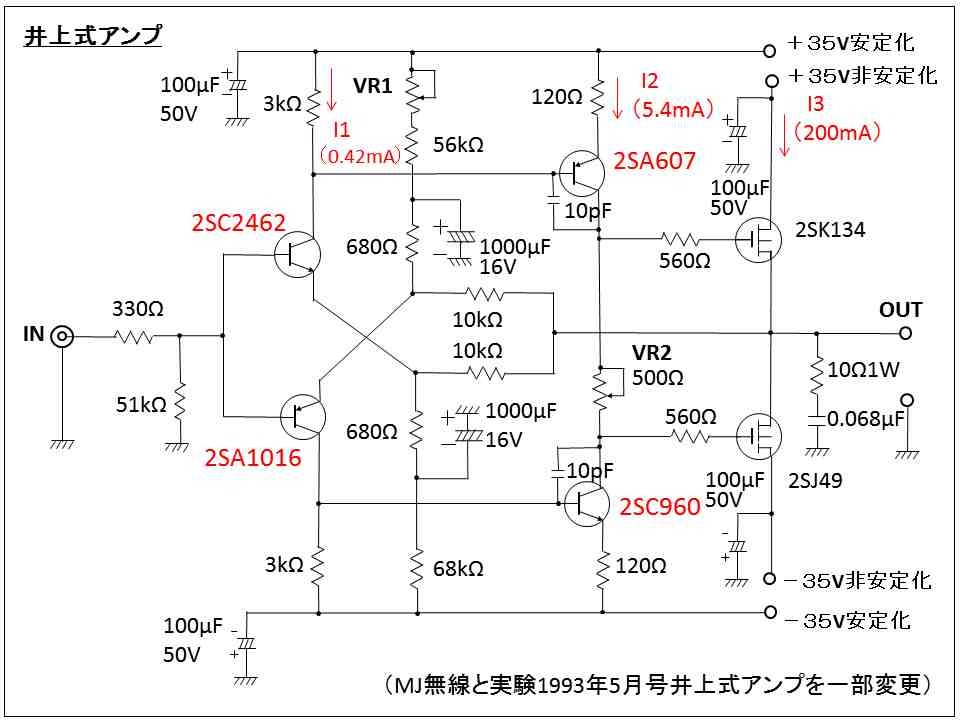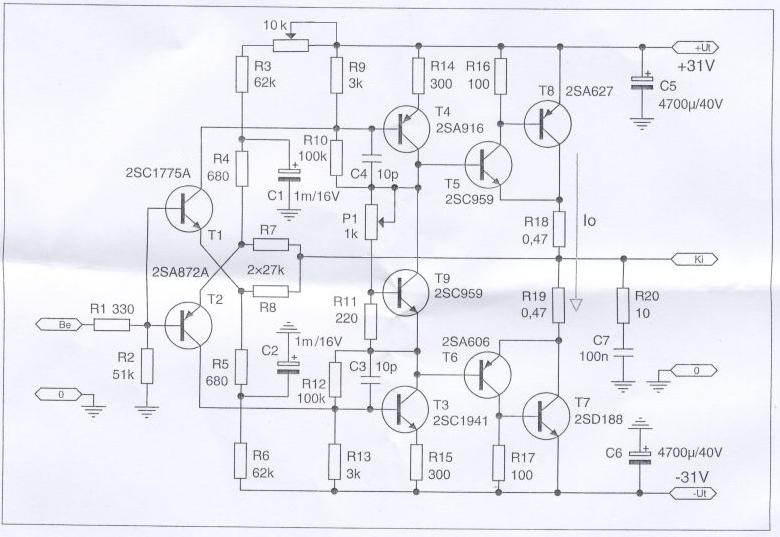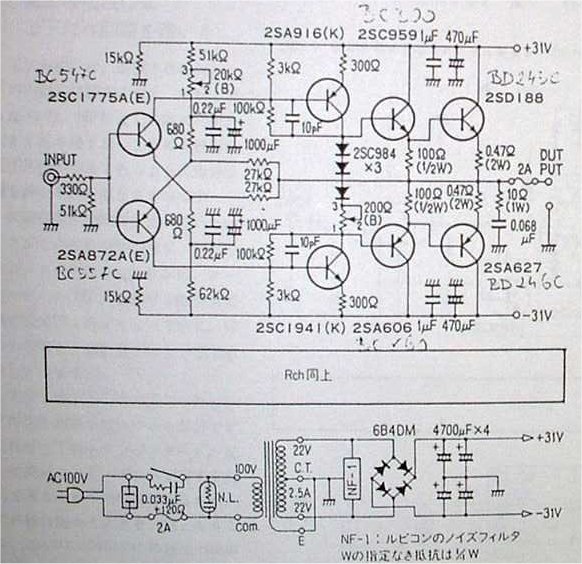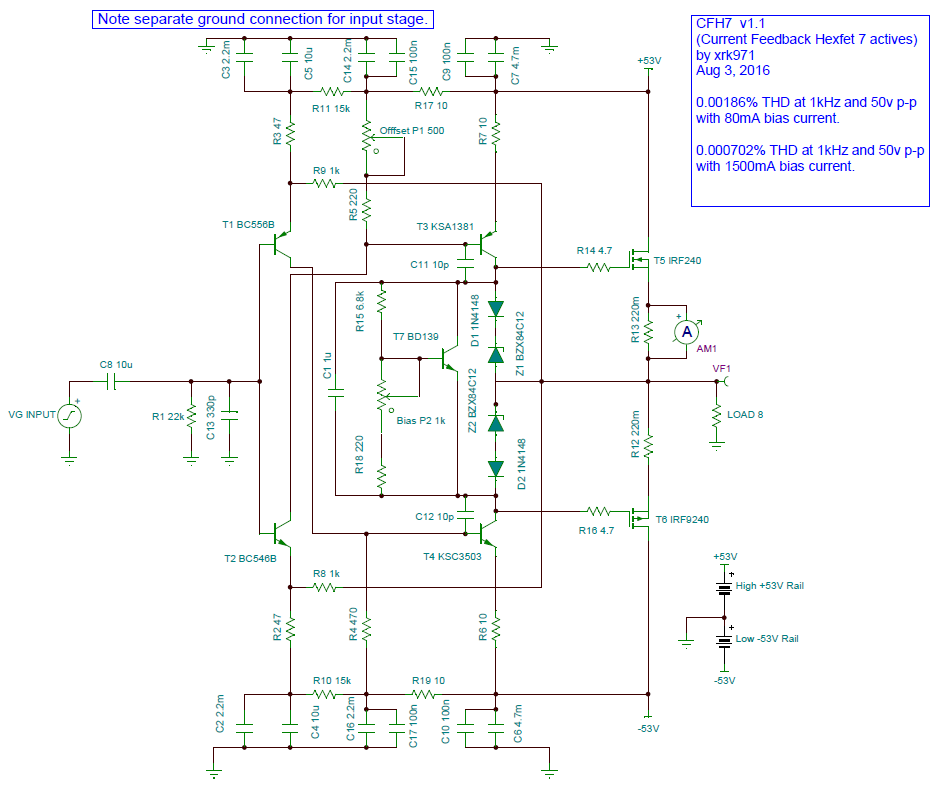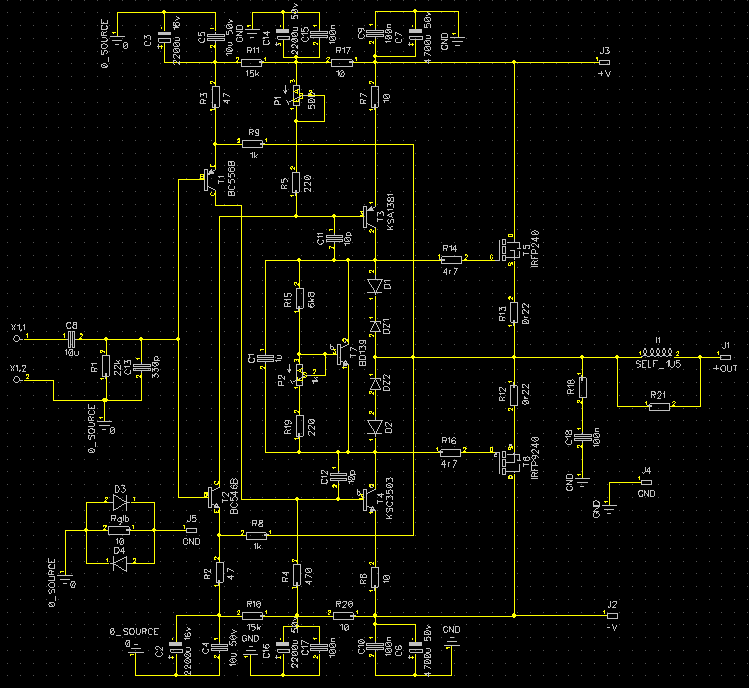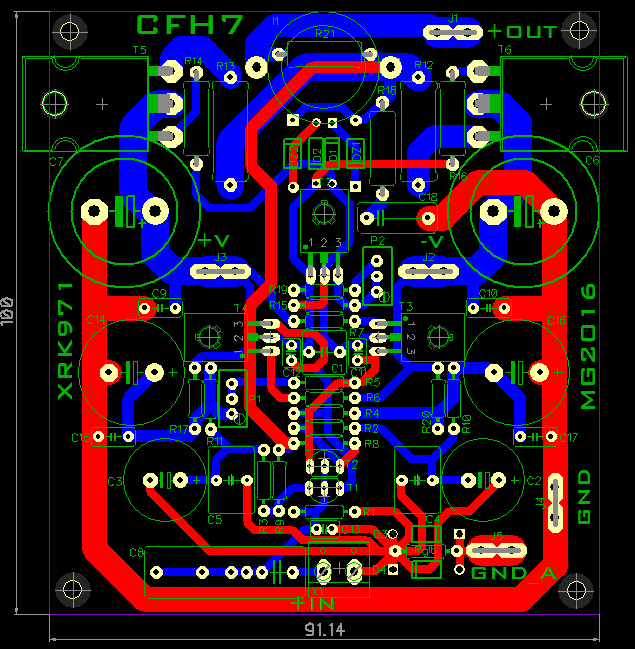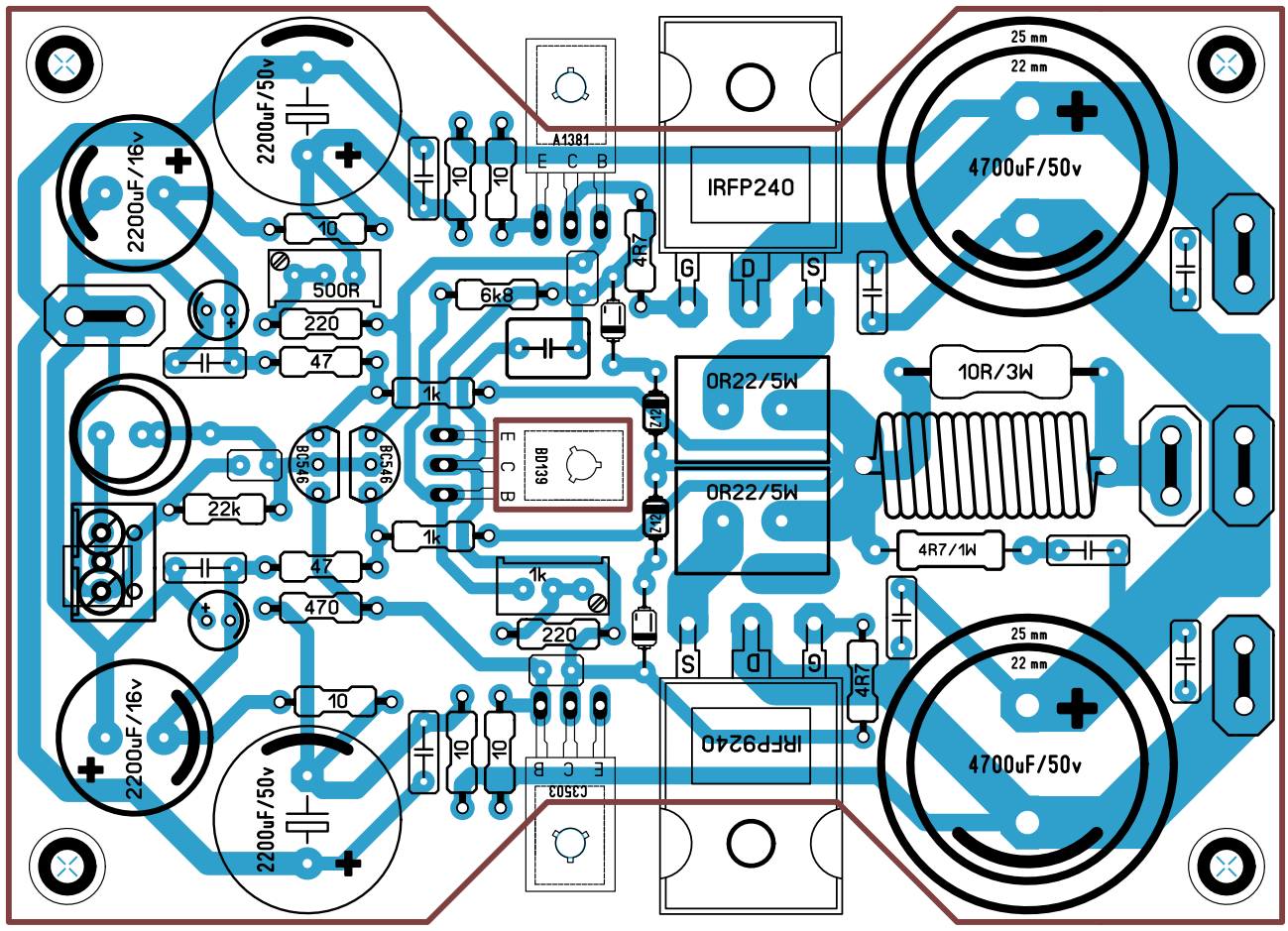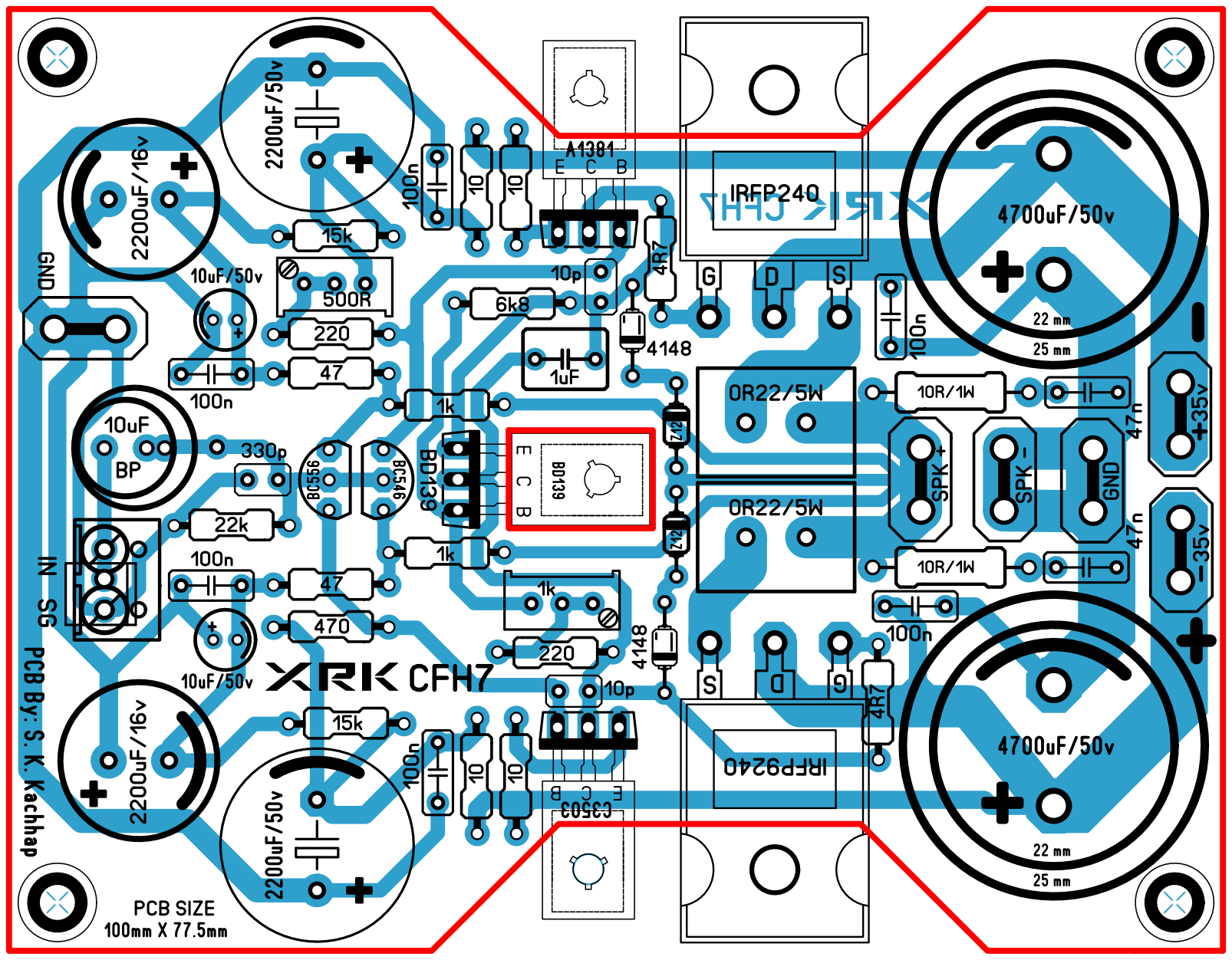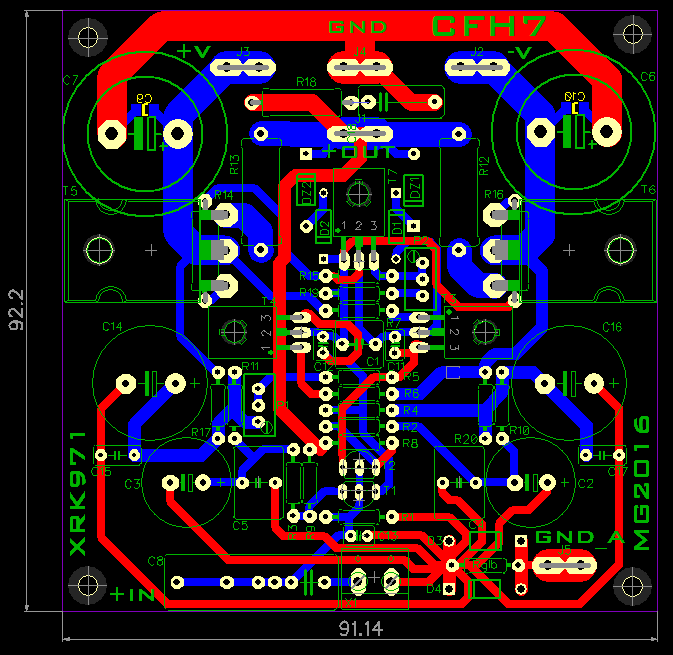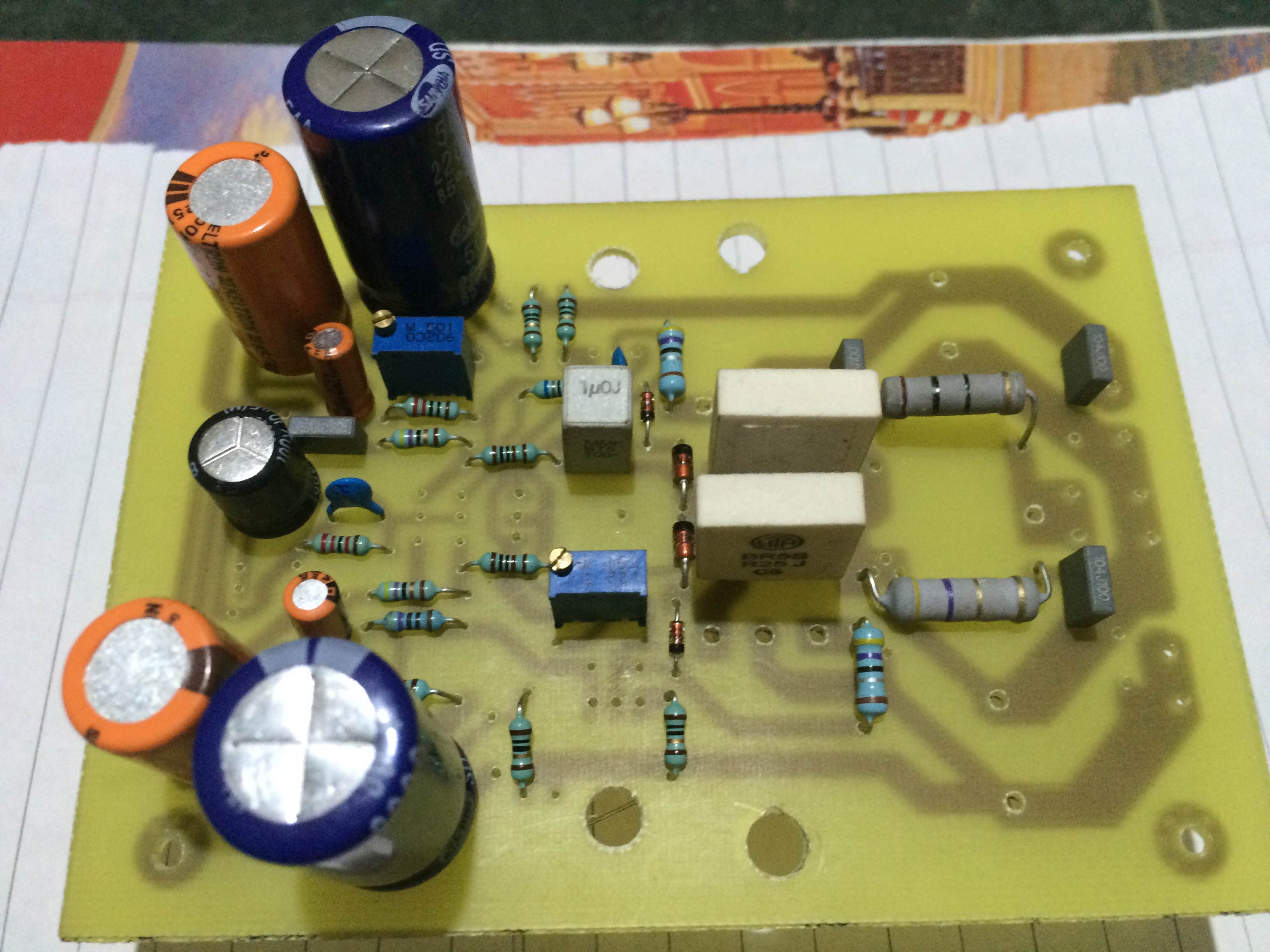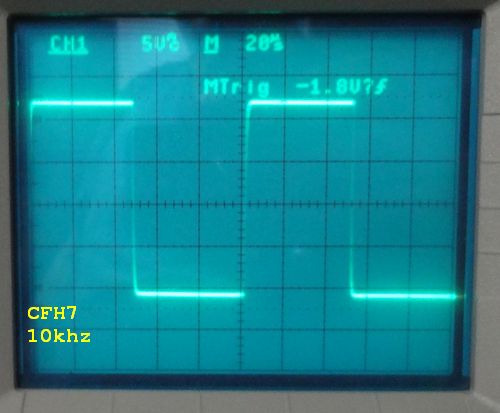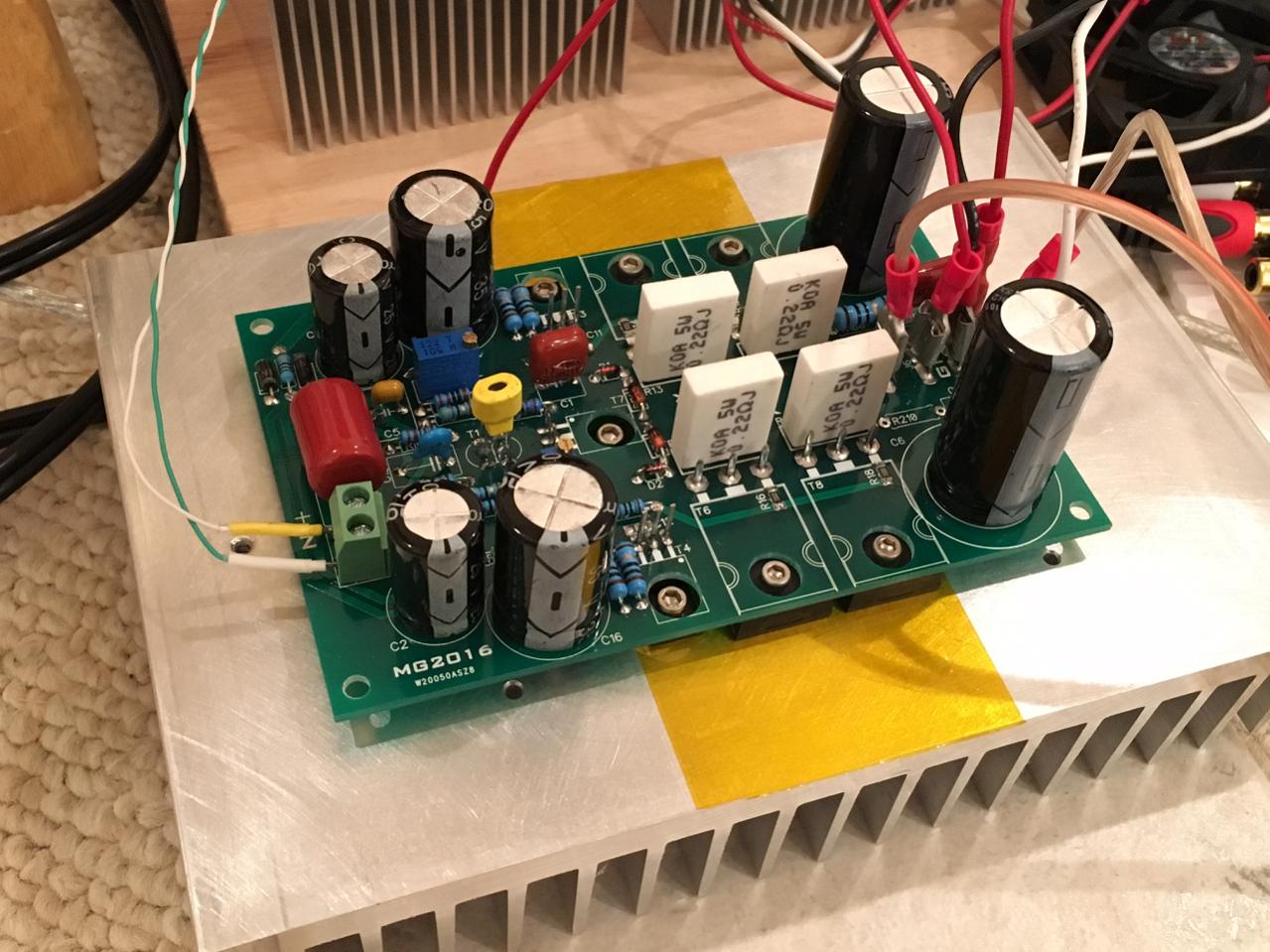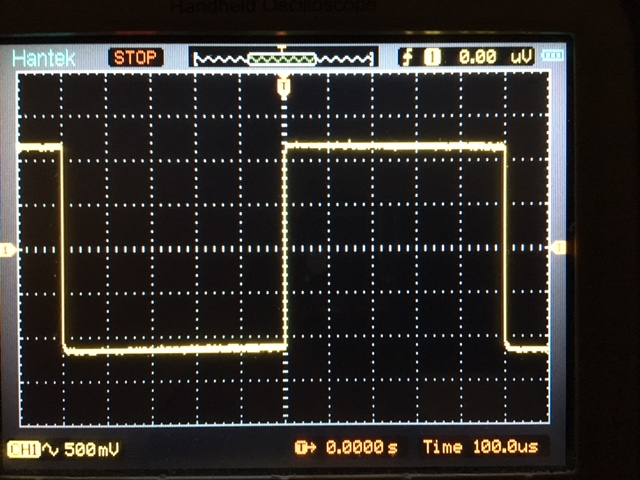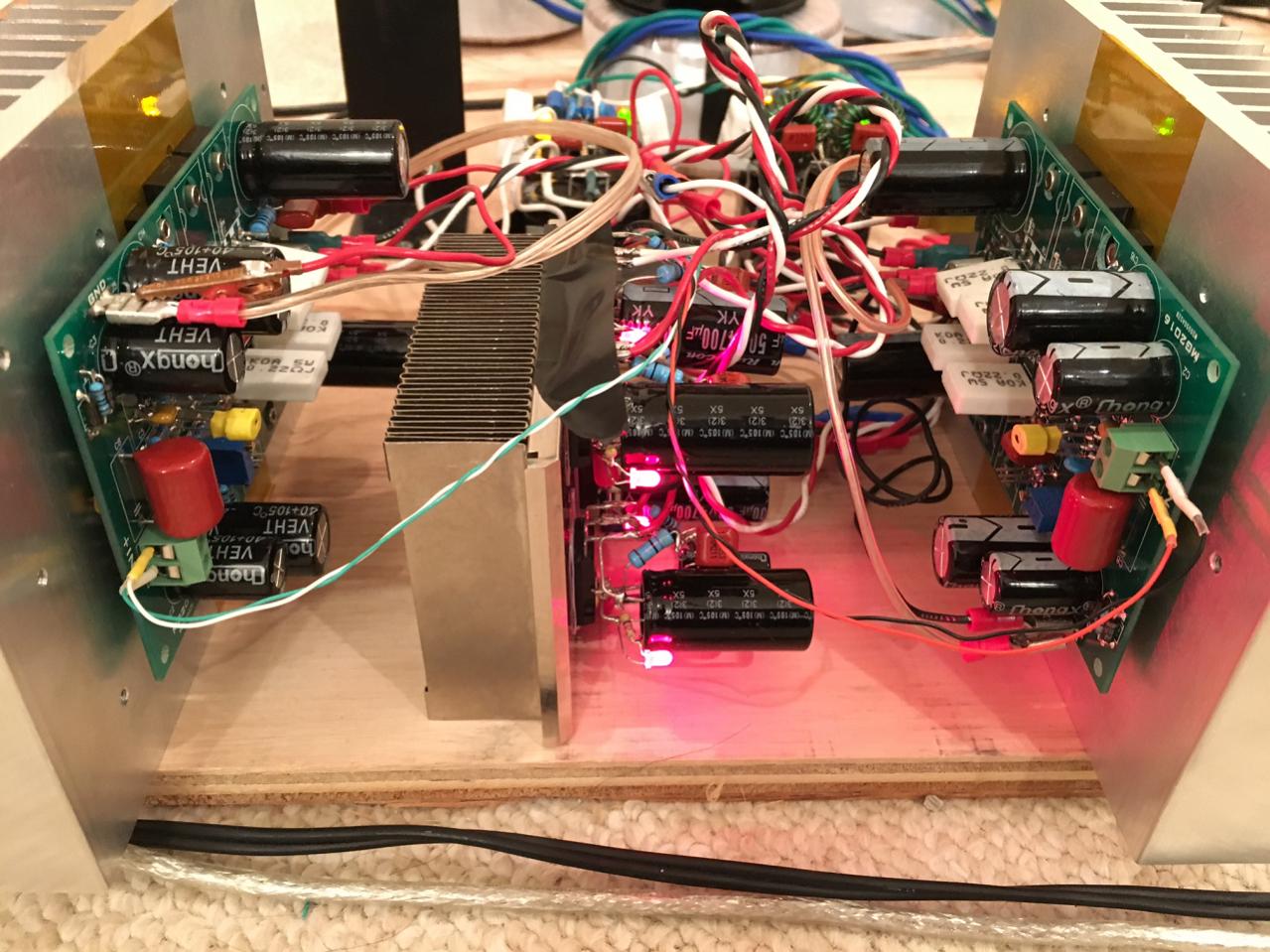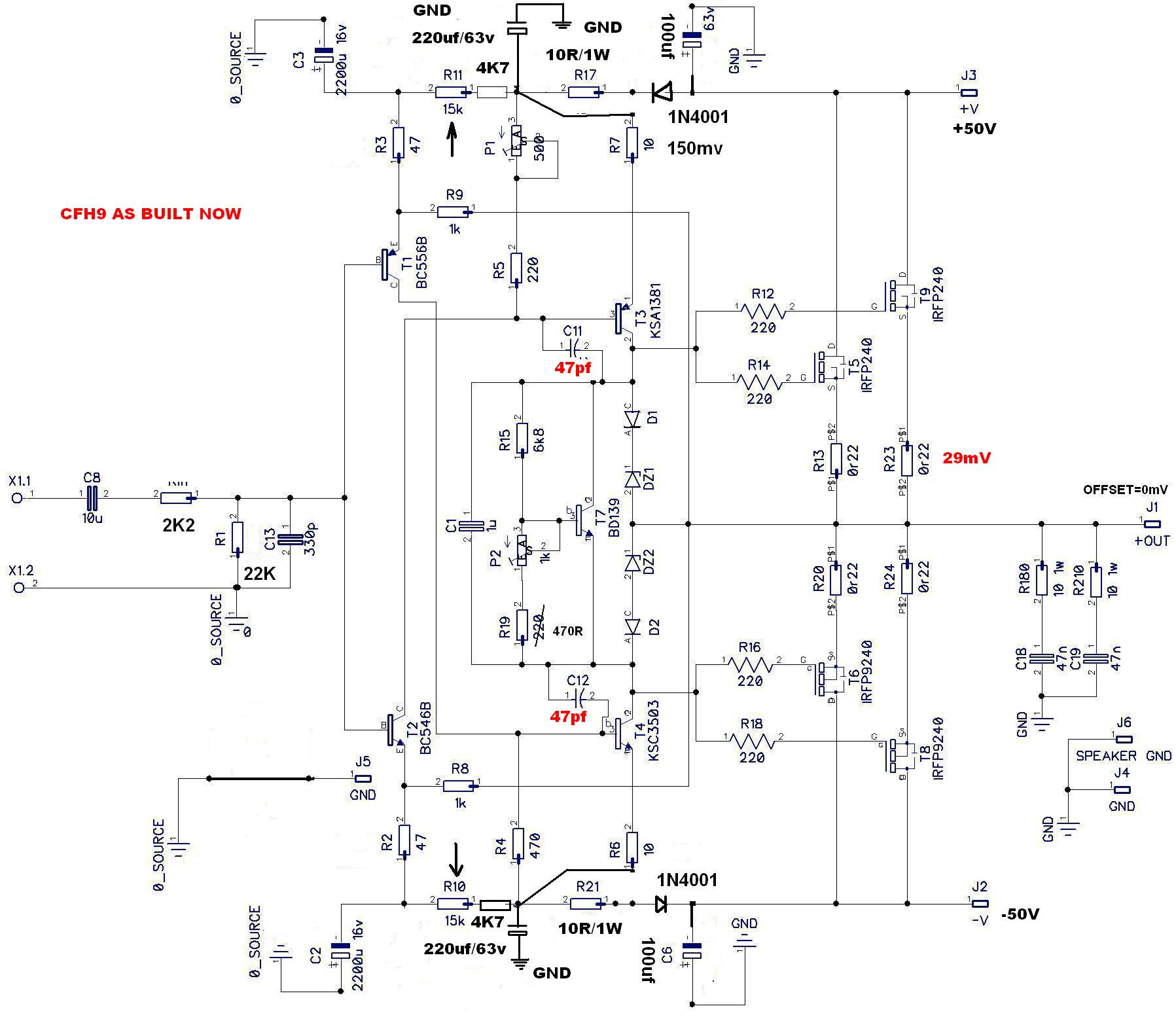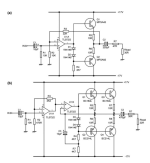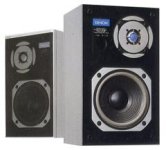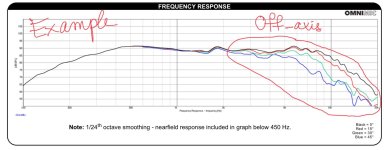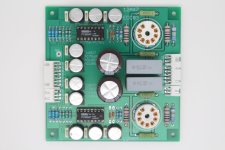https://www.diyaudio.com/forums/attachments/solid-state/1001999d1638447744-cfh7-amp-cfh11_1v2_sch-pdfFollowing the naming convention for amps used in this thread and also first posted here, I am starting a new thread as this is not anything like an Apex design offshoot anymore:
100W Ultimate Fidelity Amplifier - Page 820 - diyAudio
However, I think I will keep the standard naming convention that Apex Audio likes to use. So CFH7 stands for
Current feedback
Hex
FET with
7 active components. The amp arose out of the surprisingly successful FH9 and FH11/12 amp designs from the same thread, but with a current feedback topology that I believe was first used by Gaborbela as described here:
My first DIY amplifier 20 years a go - diyAudio
This same topology is also used in the very popular VSSA series of amps (VSSA, PeeCeeBee, FET-hex explendit, etc). My biggest inspiration for using the Gaborbela topology came after I built the amp described here:
VSSA Through-Hole Version by Jason - Page 86 - diyAudio
Now, I have applied the Gaborbela topology with the great sounding, popular and cost-effective IRFP240/9240 hexFETs, while reducing the number of active component parts count from the FH9, which has 9, to 7 transistors by elimination of two transistor CCS's. The simulations of this amp in TINA indicate a surprisingly good level of performance. The usual BD139 is still used for temperature compensation as a Vbe multiplier. Very large 4700uF rail caps are needed if you want the squarest square waves, but smaller 1000uF caps would probably sound just fine.
Here is the schematic:
And here are the simulated results:
1kHz sine wave at 50v p-p with 80mA quiescent bias current:
50kHz square wave:
200kHz square wave:
FFT spectrum at 1kHz:
HD components at 1kHz sine wave excitation:
HD components at 20kHz sine wave excitation:
Gain and Phase as a function of frequency:
As you can see, the predicted HD of 0.00084% at 1kHz and the clean, sharp-edged square waves are very good indeed for a 7 active element amp that uses nothing exotic or special. Vishay hexFETs are available for under $1/ea, so this amp is literally under $5 to build. The bang for the buck on this amp is pretty much up there.
So, it's still in simulated schematic stage at this point and un-tested. I would welcome someone taking a crack at the layout for a Sprint/Gerber file and we can then test and listen.
Edit Aug 3, 2016: several members have pointed out that this topology probably originated from Japan in the 1970's:
Version 1.1 schematic that Idefix will design layout for:
Update Aug. 7, 2016: Idefixes generated the new layout (with associated schematic for parts numbering):
We are going to press with this layout - a masterpiece - great work Idefixes!
BOM for above amp:
http://www.diyaudio.com/forums/attachments/solid-state/572548d1475477936-cfh7-amp-cfh7-bom.txt
Edit: Aug 15, 2016 - Sonal Kunal has just developed a single sided layout - still not final but very cool looking.
Edit: Aug. 16, 2106 - Latest layout from Sonal with no onboard inductor but 100mm max size
Edit: Aug. 17, 2016 - Idefixes has a beautiful new 2-layer layout that re-routes the ground bus to reduce RF spray onto the input stage:
So many layouts to try!
Still4given or Andrewlebon will probably be the first to reach first sound.
Andrewlebon in progress...
Still4given in progress...
I can't wait to see someone with a small waisted F1 car style board as Sonal has prescribed.
Edit Aug 19, 2016: Still4given had built and verified that Sonal's layout works but requires fixing wiring of Vbe multiplier as that has an error and also 4.7R gate stoppers are not enough to prevent oscillation. 100R seems to work there.
CFH7 Amp - Page 21 - diyAudio
Here is a dual output pair version called CFH9:
CFH9 works well - nice square wave:
CFH9 in stereo with Juma's Easy Peasy cap multiplier:
This is one of my top 3 amps.
Dec 16, 2016: Thanks to Thimios for finding grounding issue in design. Here is final mod to achieve very good PSRR and low THD. See post here
http://www.diyaudio.com/forums/solid-state/294834-cfh7-amp-82.html#post4920073
Edit Dec 5, 2021: saddevil has made a nice layout with some improvements in a cap Mx for the front end and one for the main outputs. This should have a really low noise background.
More info and
Gerbers, here.
Schematics here.

